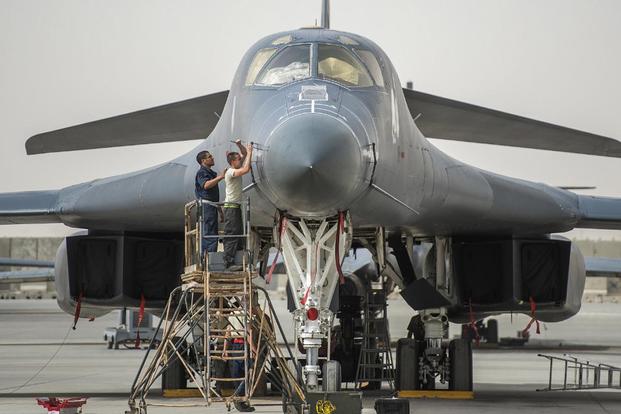NATIONAL HARBOR, Md. -- Three months after the Air Force grounded its entire B-1B bomber fleet when an ejection seat failed during a mid-air emergency, the general overseeing the fixes said the problem is not affecting overseas missions.
The Air Force has not missed any operational requirements as a result of the June service-wide safety stand-down for the B-1B Lancer following a May emergency landing, Gen. Timothy Ray, head of Air Force Global Strike Command, told reporters at the annual Air Force Association Air, Space and Cyber conference outside Washington, D.C.
"I got an update here recently on the delivery schedule for the last lot to make sure those seats are healthy," said Ray, who took over Global Strike Command last month.
The Air Force has prioritized fixes on the faulty ejection seats for bombers carrying out missions across the globe, he said. Leaders also carefully assess which Lancers are used during training missions.
"What you'll do is you'll use the good airplanes a lot more," Ray said. "And we give the commanders some latitude as to what they will fly and what they will and won't fly in terms of risk. But in the end, we're not going to put anyone in a position where they're not safe."
At issue is a crimped part that prevented at least one Lancer ejection seat from firing properly. During that May mid-flight scare, the crew was forced to make an emergency landing in Texas rather than leave a member behind when the ejection seat malfunctioned.
They were on a training flight when an indicator light warned them of a fire, Air Force Secretary Heather Wilson said after the stand-down. When the crew started the ejection sequence, she said, "the cover comes off and nothing else happens."
"The seat doesn't fire," she said. "Within two seconds of knowing that that had happened, the aircraft commander says, 'Cease ejection, we'll try to land.' "
Ray, who has flown the B-1 and commanded the 7th Bomb Wing, which also flies that aircraft, said he's pleased at the speed at which the Air Force has responded to the problem.
"I had a senator tell me, 'Wow this is just terrible,' and my comment would be this would cripple another air force," Ray said. "Any other air force on the planet would take well over a year to fix this. This is what we do."
-- Gina Harkins can be reached at gina.harkins@military.com. Follow her on Twitter at @ginaaharkins.










